This article was co-authored by Bryan Hamby. Bryan Hamby is the owner of Auto Broker Club, a trusted auto brokerage in Los Angeles, California. He founded Auto Broker Club in 2014 out of a passion for cars and a unique talent for customizing the car dealership process to be on the buyer’s side. With 1,400+ deals closed, and a 90% customer retention rate, Bryan’s focus is to simplify the car buying experience through transparency, fair pricing, and world class customer service.
There are 12 references cited in this article, which can be found at the bottom of the page.
This article has been viewed 66,078 times.
Buying a classic car is not so different from purchasing a typical car. It requires a good amount of research and inspection to make sure you are getting a good-quality vehicle. Buying a classic car has the added challenge of it being used and being a collector’s item, so there is much more to look for ahead of time. Additionally, classic cars are often much larger investments than normal cars, so it is important to get it right. By doing your research, diligently examining the car, and having realistic buying expectations, you can find the classic car of your dreams.
Steps
Finding a Car
-
1Determine what you'll be using the classic car for. If it will be used as a daily driver, there is no need to find a "show condition" vehicle. If you plan on entering classic car competitions, you'll have to find something with its original parts and spend slightly more. Additionally, you will have different car requirements if you want it for romantic weekends or family outings versus speeding down the highway. Whether you would like to use it year round is another factor to consider. Take all factors into account when deciding on a car to help you find the best one for you.[1]
-
2Choose a model. First get a general idea of the car you want. Based on what you’ll be using it for, maybe you’ve decided to go with a Corvette. Once you know the model you are interested in, narrow it down to 2 or 3 years (e.g., Corvette 1963-1965). This will help with your search. To further narrow it down, research what changes were made each year to find what best suits your needs. Then decide on the exact make of the car that you desire.Advertisement
-
3Join an owner’s club. Once you have an idea of which classic car you want, you can find an owner’s club for that type of car. With an owner’s club, you will be able to meet with enthusiasts, learn a lot, and find cars for sale at reasonable prices. Check with local classic car clubs for any people who own, or have owned the type of classic you are interested in. They may be able to help you determine what to buy and what to avoid.[2]
- Look at Practical Classics or Classic & Sports Car magazines for lists of owner’s clubs.
-
4Look online. There are many websites that sell classic cars. As with any online purchases, be sure to exercise caution when shopping online. Try to see the car in person before buying it whenever possible.
- Before buying a car from a website, check reviews of the website through independent organizations such as Consumer Reports or the Better Business Bureau. If a deal feels shady or too good to be true, look elsewhere; many scams happen in online sales, and you don't want to risk making a mistake with a purchase of this magnitude.
-
5Look at many different cars. This will help you to make an informed choice. It is a good idea to spend at least a month shopping around before you buy your classic car. If you are looking for a specific model, depending on its rarity, you might need to be patient for one to come on the market. Start by looking locally because it will be easiest to buy a car in your area. This will also make it simple for you to see the car before buying it. Find local sources through your car club, car museums, classic car dealerships, newspaper classifieds, or local online listings, such as your city’s Craigslist.
-
6Plan your budget ahead of time. This is important because classic cars come at a wide range of prices. It can be easy to fall in love with a car that you can’t afford. By determining your budget ahead of time, you can keep yourself from overspending. Try to avoid going into debt if at all possible. You don’t want to enjoy your car but lose your house!
- To plan a budget, look at your monthly income and expenses and determine how much you have leftover. Take into account money you have in savings and find a reasonable budget that won’t require you to miss out on other important parts of life, like eating, for example!
-
7Look for rare cars. It is very difficult to make money by investing in cars, but rare cars are your best chance of doing so. The less that were made, the more value it will have. To find out whether it is especially rare, check with the manufacturer to find out how many were made.[3]
-
8Buy a restored car. This will help keep its maintenance to a minimum, but be prepared to pay a premium price. A fully reconditioned, professionally restored car might have hundreds of thousands of dollars invested in time and parts, and will have every nut and bolt examined. A restored car will perform as well, if not better, than it did when it was new. At this point the car will only require normal maintenance, although it is likely you will want to keep it as perfect as possible and maintain it to the highest possible standards.
Examining the Car
-
1Learn about the classic you are interested in. Research what problem areas the vehicle may have and check if the problem has been resolved. For example, many European classics have electrical problems, so check that the components are in working order. The more you know about your car of interest, the better decision you will make when buying it.
-
2Drive the car before buying it. This is not only to make sure that you like it, but also to test for any problems. Look for anything out of the ordinary and pay special attention to how it sounds. Squeaking, grinding, and clunking are not good signs! Make sure to get permission from the dealer or owner before driving it.
- If you don’t know a lot about cars, bring someone along for the ride who is an expert, like a friend from your owner’s club.
-
3Have a vehicle appraiser look at the car. They may be able to tell if it has been in an accident and whether the engine, transmission, and other vital components are original. This will alter the value of the vehicle. They will determine a price by looking at the value of comparable cars that are sold to ensure a fair market value. They are experts in the car market and highly knowledgeable about classic cars. Having a car professionally appraised is important when making a big investment.[4]
- Look for an appraiser that adheres to Uniform Standards of Professional Appraisal Practice to find someone reputable.
- Search online using the name of your city and the keywords "classic car appraisal" to find an appraiser near you.
-
4Check the car’s title. Make sure it is actually registered to the seller. This will help you to avoid fees and avoid buying a stolen car. You can check with the DMV or vehiclehistory.gov by the car’s VIN (Vehicle Identification Number), which can be found on its registration. There is usually a small fee of a couple of dollars to check the title.Image:Buy a Classic Car Step 12.jpg|center]]
-
5Look carefully at the interior and exterior. Does it have its original parts? What damage is there? Each little repair will quickly add up. Look for welding marks, which can signal a clip job. Pay attention to the quality of the paint and notice any dents or misaligned panels. Missing trim and odd smells are another cause for concern. You need to carefully examine any car before you buy it.
-
6Check the car’s mileage. The lower the mileage, the less it has been used, the more valuable it is. There is nothing wrong with high-mileage cars, but low-mileage is important if you want your car to be an investment. Additionally, low-mileage cars often require less upkeep than high-mileage cars. But since they are in newer condition, they will likely cost you more.[5]
- A low-mileage car would be one with 40,000 miles, for example, while a high-mileage car might have 200,000 miles.
- Be aware of mileage scams. Some sellers try to trick buyers by claiming a car has lower miles than it actually has. Any car that has been around for at least 15 years is likely to have significant mileage. Since the odometer can be changed, pay attention to other parts of the car such as the carpets, headliner, gearshift knob, spare wheel, tires, and brake pads. If these have significant wear or damage but the mileage is under 50,000, then something is askew. Low-mileage classics are very rare but are often faked, so be sure to look for the telltale signs.[6]
-
7Get a used vehicle history report. This will provide you with valuable information on the car to make sure it has not been stolen and to check how many people owned the car previously. This can be completed online using a service such as Carfax. Simply enter the car’s VIN or license plate and find out its history, including accidents, recalls, usage, damage, and registration. This will cost around $40, but many dealers offer them for free.[7]
- Keep in mind that classic cars will generally have multiple owners. This is to be expected, but if your owners are keeping the car for less than a year or two, this could indicate a problem. For example, for a forty-year-old car, between five and ten owners is perfectly acceptable, but over twenty would be cause for concern. Ideally, two owners per decade is a good rule of thumb.
-
8Get it inspected. Car inspection companies and car repair shops offer inspections. A thorough inspection will be conducted by an expert who will look at the car’s exterior, engine, brakes, tires, radiator, belts, hoses, and fluids. This is an especially important step if you are not a mechanic. This can help you to avoid buying a car with any major problems. If you are buying the car from a dealer, it will likely come with an inspection.[8]
- National Auto Inspection Services offer inspections for $220.[9]
- To get an inspection specific to classic cars, find a list of inspectors at fossilcars.com/resources/classic-car-inspections. It is a good idea to get a classic car inspected by a specialist that knows exactly what to look for with classics. You don’t need to worry about finding an inspector specifically for your car’s make or model, but finding one specifically for classics will help.
-
9Look for rust damage. Expect some rust, but if an entire panel is rusted, this is cause for concern. Significant rust means the car has not been properly maintained. It can also indicate more serious problems with the car. A little rust around the edges is to be expected in an old car, but significant rust means you should look elsewhere.
-
10Check that the VINs (Vehicle Identification Number) match. Check that the VIN on the car's title matches the official VIN tag. If they do not match then the vehicle may have been in a severe accident, stolen, or counterfeit.
- VIN numbers were first used in 1954 and the numbers and letters used, as well as the length, varied by manufacturer until they became standardized in the 80s.[10]
- You may be able to locate VIN or serial numbers on a sticker on the driver's side door, on the firewall, or elsewhere in the engine compartment.
- Check the engine, transmission, and rear axle to make sure they have the same VIN number as well. The last six numbers of the VIN should be on the engine, and matching dates should be on the transmission and rear axle.[11]
Buying the Car
-
1Prepare for hidden costs. A classic car will cost a lot more than its original price. Plan to spend up to seven times more for insurance than you would with an average car. Storing the car can also cost a lot if you don’t have your own garage. Storage in an auto facility or motor club can cost $500+/month. Classic cars generally require a lot of upkeep, and unexpected repairs can cost $1000+. Make sure to factor all costs into its price so that you have enough money to maintain your car.[12]
- Be prepared to pay more for parts. If you buy something rare, be prepared to pay more not only for the car, but also for its parts. In many cases you'll have to get parts custom-made, which can be very expensive. You may also be able to buy used parts from someone who is "chopping" up a similar model. You can check online auctions for general availability of such parts.[13]
-
2Pay an appropriate price. It is not uncommon for new classic car buyers to overspend. A fair price needs to be calculated based on the car's age, the condition it's in, how rare it is, and what features it has. Find the market value of your car at the National Automobile Dealers Association at nada.org.[14]
-
3Buy the car. If you need to finance the car, you will likely have trouble finding a bank or lending institution that is willing to help because they don’t understand the value of an object that is several decades old. But there are some companies that will help, such as J.J. Best Banc & Company and Woodside Credit. You will need to make a down payment of 10-30% and will pay interest ranging from 5-10%. The loan is often for 10-12 years and you can often build in the cost of warranty. The insurance and car title will need to be in the owner’s name. You can transfer the car title at the DMV.[15]
- Of course, if you have the money to pay for it, you can simply buy it with your own money. It is always preferable to avoid going into debt. Save up for it and then pay by check.
- Another option is to lease a classic car if you can’t afford to own it. This is advantageous because if the market changes and the car’s value decreases, it won’t affect you.
Expert Q&A
-
QuestionHow do you pay for a classic car?
 Bryan HambyBryan Hamby is the owner of Auto Broker Club, a trusted auto brokerage in Los Angeles, California. He founded Auto Broker Club in 2014 out of a passion for cars and a unique talent for customizing the car dealership process to be on the buyer’s side. With 1,400+ deals closed, and a 90% customer retention rate, Bryan’s focus is to simplify the car buying experience through transparency, fair pricing, and world class customer service.
Bryan HambyBryan Hamby is the owner of Auto Broker Club, a trusted auto brokerage in Los Angeles, California. He founded Auto Broker Club in 2014 out of a passion for cars and a unique talent for customizing the car dealership process to be on the buyer’s side. With 1,400+ deals closed, and a 90% customer retention rate, Bryan’s focus is to simplify the car buying experience through transparency, fair pricing, and world class customer service.
Professional Auto Broker The seller decides the payment. The method you use to pay for a car depends on the seller. Some prefer cash or check, and others might use PayPal. You should make sure you use something trackable in case there’s a hidden issue with the car. If the car is over $2,000 to $25,000, a cashier’s check is best.
The seller decides the payment. The method you use to pay for a car depends on the seller. Some prefer cash or check, and others might use PayPal. You should make sure you use something trackable in case there’s a hidden issue with the car. If the car is over $2,000 to $25,000, a cashier’s check is best. -
QuestionWhat is the engine power of the 1971 Renault 16?
 Zakariya UsmanCommunity AnswerRenault 16 TS Engine Technical Data. Maximum power - Output - Horsepower: 85 PS or 84 bhp or 63 kW @ 5750 rpm.
Zakariya UsmanCommunity AnswerRenault 16 TS Engine Technical Data. Maximum power - Output - Horsepower: 85 PS or 84 bhp or 63 kW @ 5750 rpm. -
QuestionWhat is the engine power of the 1972 Peugeot 304?
 Alexander MikhailovaCommunity AnswerHorsepower: 255 to 288 hp. Dimensions: 186″ L x 72″ W x 57″ H. MPG: Up to 26 city / 36 highway. Curb weight: 3,582 to 4,138 lbs. Engine: 2.0 L 4-cylinder.
Alexander MikhailovaCommunity AnswerHorsepower: 255 to 288 hp. Dimensions: 186″ L x 72″ W x 57″ H. MPG: Up to 26 city / 36 highway. Curb weight: 3,582 to 4,138 lbs. Engine: 2.0 L 4-cylinder.
Warnings
- Be aware that classic vehicles require effort to stay in the shape they are. Many people buy a classic with the thought, "Wouldn't it be fun to drive that after work every day?” Realistically, there will always be something that needs fixing.⧼thumbs_response⧽
- Remember classic cars were built during a different time, with different standards from today. Some old cars were manufactured with materials known to corrode and much lower safety standards than today. You may find you are better storing your classic motor in a garage over winter, to ensure protection from the colder and harsher weather conditions.⧼thumbs_response⧽
- The good thing with an older vehicle is that because there is less gadgets, there is usually less things to go wrong and if something does, it will be easier to fix (eg. No touchscreens to reprogram, electric windows to jam, central locking to malfunction).⧼thumbs_response⧽
References
- ↑ http://www.telegraph.co.uk/motoring/classiccars/10644214/Buying-classic-cars-a-beginners-guide.html
- ↑ http://www.telegraph.co.uk/motoring/classiccars/10644214/Buying-classic-cars-a-beginners-guide.html
- ↑ http://www.mensjournal.com/expert-advice/10-tips-on-buying-classic-cars-20130304/do-your-homework
- ↑ http://www.newsday.com/classifieds/cars/how-classic-cars-get-appraised-1.5674835
- ↑ http://www.mensjournal.com/expert-advice/10-tips-on-buying-classic-cars-20130304/do-your-homework
- ↑ http://www.buyclassiccars.com/articles/39.asp
- ↑ https://www.carfax.com/guides/buying-used/what-to-consider/free-carfax
- ↑ https://www.wellsfargo.com/financial-education/credit-management/car-inspection-before-buying/
- ↑ http://www.bankrate.com/finance/auto/costs-of-owning-classic-car.aspx#slide=3
- ↑ http://www.dmv.org/vehicle-history/older-vehicles.php
- ↑ http://www.moneytalksnews.com/10-cardinal-rules-for-buying-classic-cars/?all=1
- ↑ http://www.bankrate.com/finance/auto/costs-of-owning-classic-car.aspx
- ↑ http://www.cartalk.com/content/so-you-want-buy-old-car-i-know-i-do
- ↑ http://www.bankrate.com/finance/auto/costs-of-owning-classic-car.aspx#slide=3
- ↑ http://www.newsday.com/classifieds/cars/how-to-finance-a-classic-car-1.5774254
About This Article
If you want to buy a classic car, start by checking the exterior and interior for signs of rust or a previous accident. You should also have a mechanic or appraiser look over the car to make sure it's in good working order. Additionally, request a used vehicle history report by entering the car's registration number on a site like Carfax. Before making an offer, check the car's mileage to see if it's a low-mileage car, and take it for a test drive to make sure you're happy with it. For tips on how to get a car inspected and how to know if a car has been stolen, read on!




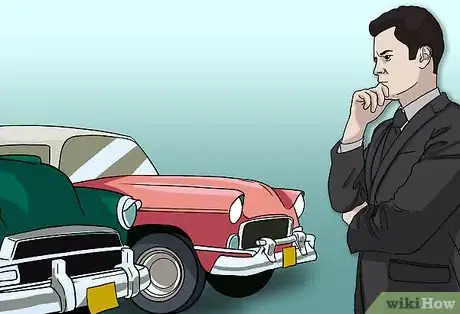
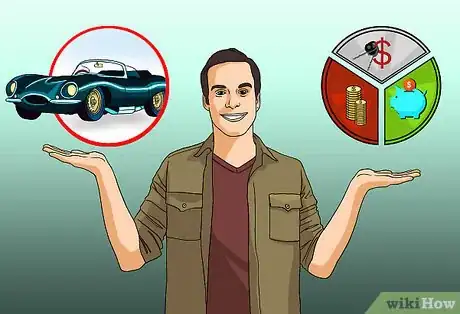

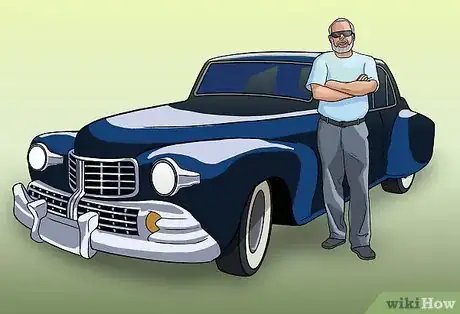


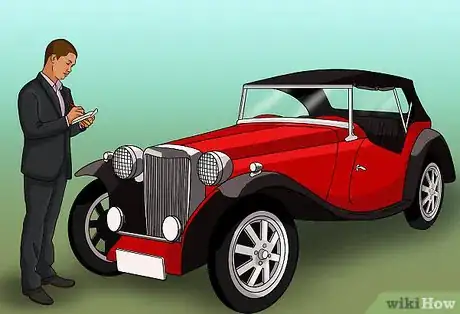
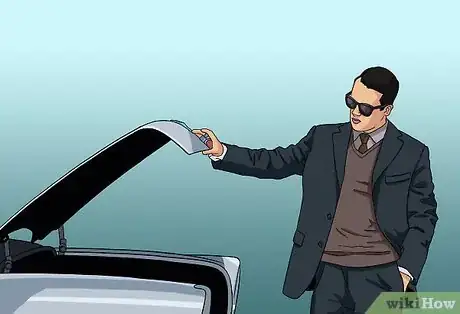


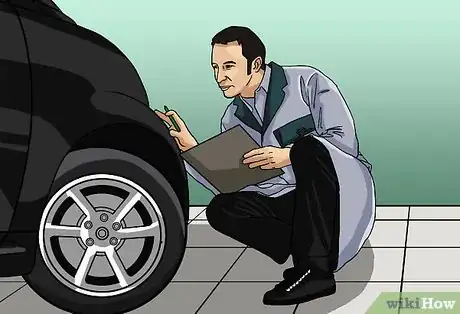

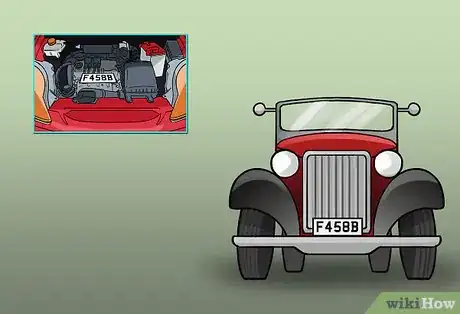




-Step-9-Version-2.webp)
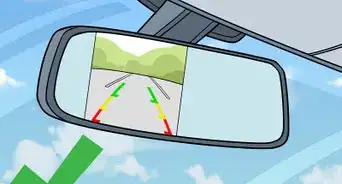

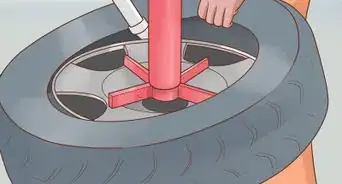
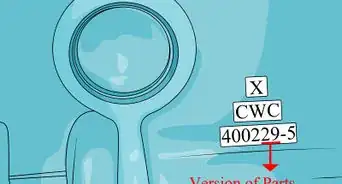
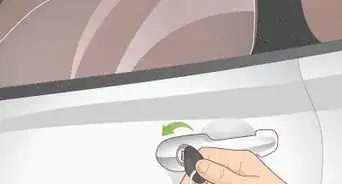
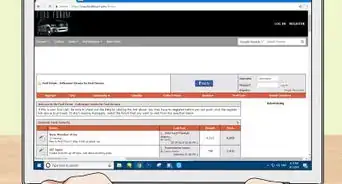
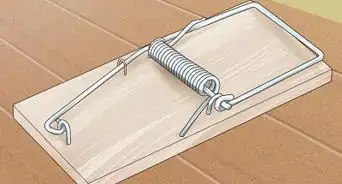
-Beetle-Step-5-Version-3.webp)
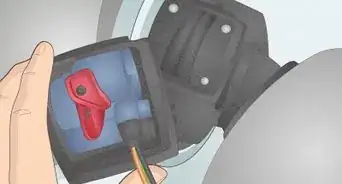
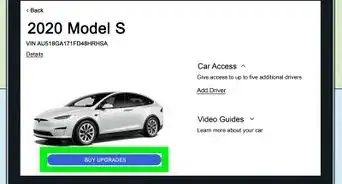

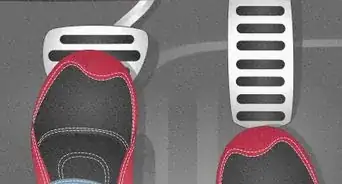








-Step-9-Version-2.webp)




































